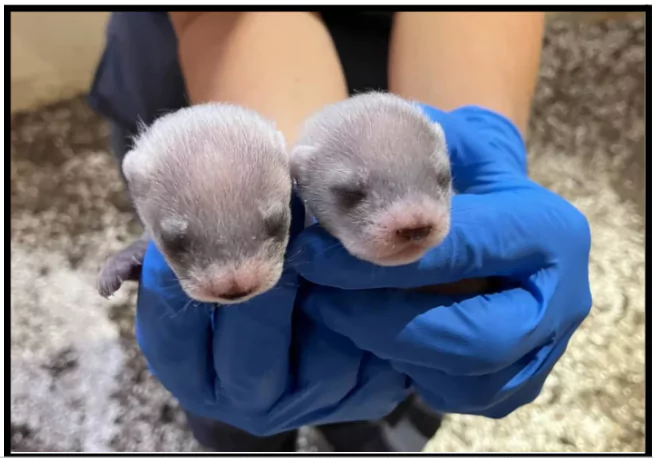The Smithsonian National Zoo and Conservation Biology Institute (NZCBI), Washington, successfully bred two black-footed ferrets from a cloned mother named Antonia.
- Antonia, the black-footed ferret mother who was cloned using the genetic material of a ferret named Willa.
About Black-footed Ferrets

- Characteristics: The black-footed ferret is one of North America’s most endangered mammals and is the only ferret species native to the continent.
- Black-footed ferrets are primarily nocturnal.
- Habitats: Grasslands
- IUCN Status: Endangered
- Population: Approx. 370 in the wild.
- Key threats: Habitat loss and Disease.
- Conservation Efforts: Captive breeding, reintroductions, habitat protection, and cloning have helped restore them to over 300 animals in the wild.
- The black-footed ferret is considered a flagship species for the North American prairie (grassland).
Check Out UPSC NCERT Textbooks From PW Store
Cloning in the Context of Black-Footed Ferret Conservation
- Cloning is a process that creates a genetically identical copy of a biological entity, using DNA from a donor.
- For endangered species, cloning can be used to reintroduce valuable genetic material, broadening the gene pool and enhancing the genetic diversity needed for species survival.

- Process Used: In this case, Smithsonian scientists used preserved DNA from Willa, a black-footed ferret from 1988, to clone Antonia. This involved somatic cell nuclear transfer, where a nucleus from Willa’s cell was transferred into an egg cell from another ferret, creating an embryo that developed into Antonia.
- Purpose of Cloning in Conservation
- Genetic Diversity: Cloning introduces genetic diversity into populations that have become inbred due to small surviving numbers. This can help increase resilience to disease and environmental changes.
- Reviving Endangered Species: For species with critically low populations, cloning can help boost numbers and reduce the risk of extinction.
- Genetic Banking for Future Use: Storing genetic material from healthy or diverse individuals (genetic banking) provides a resource for cloning efforts that could be utilized even decades later.
- Black-Footed Ferrets: Why Cloning Was Important
- Population Crisis: By the 1980s, black-footed ferrets were thought extinct until a small population was found in Wyoming. Today, only about 370 individuals remain in the wild.
- Genetic Bottlenecks: The limited gene pool makes black-footed ferrets vulnerable to diseases and reduces their ability to adapt to changing environments. All ferrets in the current population are descended from just seven individuals, leading to a high degree of inbreeding.
- Willa’s Unique Genes: The Smithsonian cloned Antonia using DNA from Willa, who had three times the genetic diversity of the existing ferret population. This new genetic material has the potential to improve the health and adaptability of future generations.
- Benefits of Cloning in Conservation
- Enhanced Survival Prospects: Cloning can help maintain a population’s genetic health, which is essential for survival.
- Reduced Extinction Risk: Cloning rare individuals can supplement populations and prevent total species loss.
- Research Advancements: Successes like Antonia’s birth contribute valuable knowledge, advancing cloning techniques that may be applied to other species.
- Challenges of Cloning in Conservation
- Technical and Ethical Complexities: Cloning is technically complex and raises ethical questions regarding intervention in natural reproduction.
- Limited Success Rates: Not all cloned animals survive or are healthy, as seen with Antonia’s third kit.
- Environmental Dependence: Cloning alone cannot address habitat loss or other environmental threats facing endangered species.
Conclusion
The cloning of Antonia and her kits signifies progress in genetic management of endangered species, showing how stored genetic materials can extend biodiversity efforts even after decades.
- Continued research and cautious application of cloning can enhance conservation strategies and foster resilience in populations on the brink of extinction.
![]() 11 Nov 2024
11 Nov 2024



